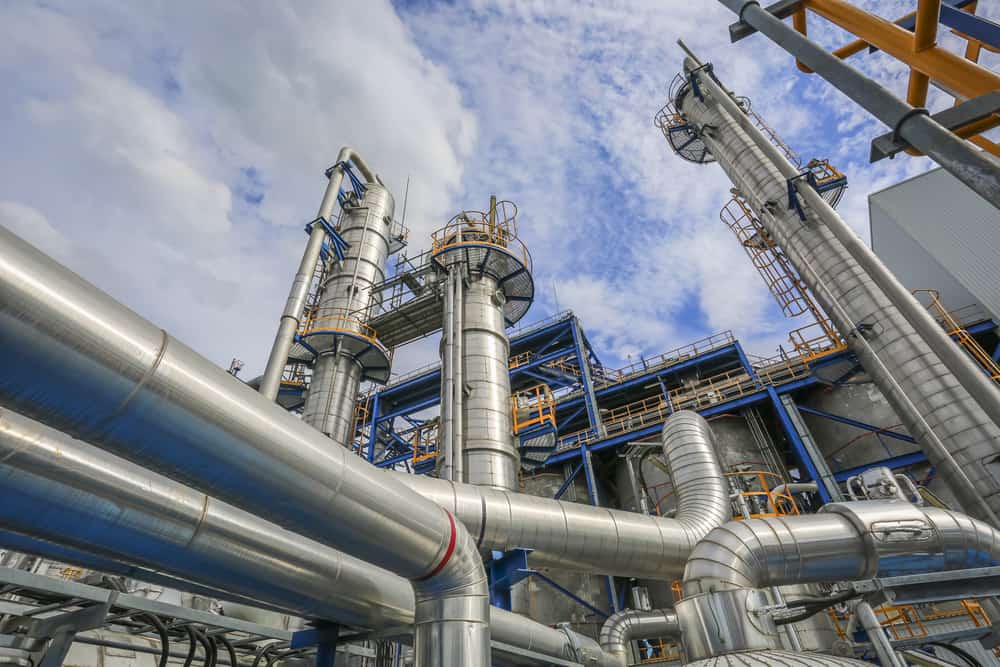
One of the first things young adults learn when they join the workforce and gain financial independence is that you get what you pay for. For most people, it only requires one painful lesson—such as having the car you bought at such a “bargain” leave you stranded on the side of the road—to take this truism to heart. For structures like metal assemblies in factories, though, the consequences of buying on the cheap can be catastrophic or even fatal.
Welders have a unique responsibility, as the public relies on them to construct systems and structures that are reliable and safe regardless of the operating environment. And welders, in turn, depend on materials, equipment, and the welding process they implement. For example, expensive alloys often are selected for pipe cladding materials. And for high-temperature facilities, Hastelloy® is a material of choice. If paired with the right equipment, the orbital welding of Hastelloy® can justify costs by delivering high performance and reliability.
What Is Hastelloy®?
Hastelloy®, similar to other alloys such as (Monel and Inconel)® and duplex stainless steel, does not refer to a singular metallic blend but a group with similar characteristics. For Hastelloy®, this includes:
The Hastelloy Family of Alloys
- Hastelloy B-3
- Hastelloy Hybrid-BC1
- Hastelloy C-4
- Hastelloy C-22
- Hastelloy C-22HS
- Hastelloy C-276
- Hastelloy C-2000
- Hastelloy G-30
- Hastelloy G-35
- Hastelloy N
- Hastelloy X
These alloys are used heavily in chemical processing operations across many industries. Petrochemical, Energy (Oil & Gas, Nuclear, Solar, Geothermal and Biomass), Desalination and Mining are some examples. There are distinct advantages that make Hastelloy® a good choice for these applications.
Advantages of Using Hastelloy®
The majority of Hastelloy® alloys are primarily composed of chromium, carbon, cobalt, molybdenum and iron. However, they may include titanium, copper, tungsten, and vanadium, as well as small amounts of manganese and silicon. Hastelloy X, however, is composed primarily of molybdenum, chromium, and nickel and is considered a super alloy. Although all of the alloys in the Hastelloy® family are corrosion resistant, X is superior in this regard and often used in highly pressurized environments where contents are corrosive. There are distinct differences between the various alloys that make them more advantageous for certain applications; however, as a group, Hastelloy® offers many advantages.
Reasons to Use Hastelloy®
- Superior corrosion resistance
- Resistance to cracking
- Resistance to seawater
- Several welding options
- Submerged Arc Welding (SAW)
- Gas metal-arc welding (GMAC)
- Gas tungsten-arc welding (GTAW)
- High-heat transfer efficiency
- Accommodate high-steam pressure
- Highly reliable service
- Cost-effective (eliminates downtime due to failures)
These desirable aspects of working with Hastelloy® are readily attainable, especially for piping and associated systems welding.
Guidelines for Orbital Welding of Hastelloy® Piping Systems
For industrial processes that involve highly corrosive liquids such as sulfuric acid, nitric acid, hydrochloric acid, phosphoric acid, and chlorine, Hastelloy® is an excellent choice for welding pressure vessels, piping, and tubes. However, just as care must be taken when fabricating these alloys, consideration should likewise be given to obtain the best orbital welding Hastelloy® results.
How to Achieve the Best Orbital Welding of Hastelloy®
- Use the best equipment
The first key to optimizing your orbital welding process is to select the best equipment. This includes choosing the weld head based on the piping used in the system (e.g. thin-walled or big bore). Additionally, it is important to ensure that your equipment is operating at its best by instituting and following a solid orbital machine maintenance checklist.
- Use the best process
Several welding processes can be applied when working with Hastelloy®. However, to leverage your orbital welding equipment and produce the most accurate consistent welds, GTAW or TIG welding is the best process to employ.
- Use the best materials
Lastly, for the best orbital welding Hastelloy® results, the best tungsten electrodes should be selected for your specific application and alloy.
Orbital welding of Hastelloy® is the best way to take advantage of the many characteristics these alloys possess that make them preferable for highly corrosive applications. And following the guidelines above will ensure that your process yields reliable and cost-effective results.
Arc Machines, Inc. has the experience, expertise, and equipment to help you maximize the benefits specialized materials such as for orbital welding of Hastelloy® alloys. For inquiries regarding products, contact sales@arcmachines.com. For service inquiries, contact service@arcmachines.com. Arc Machines welcomes the opportunity to discuss your specific needs. Contact us to arrange a meeting.




